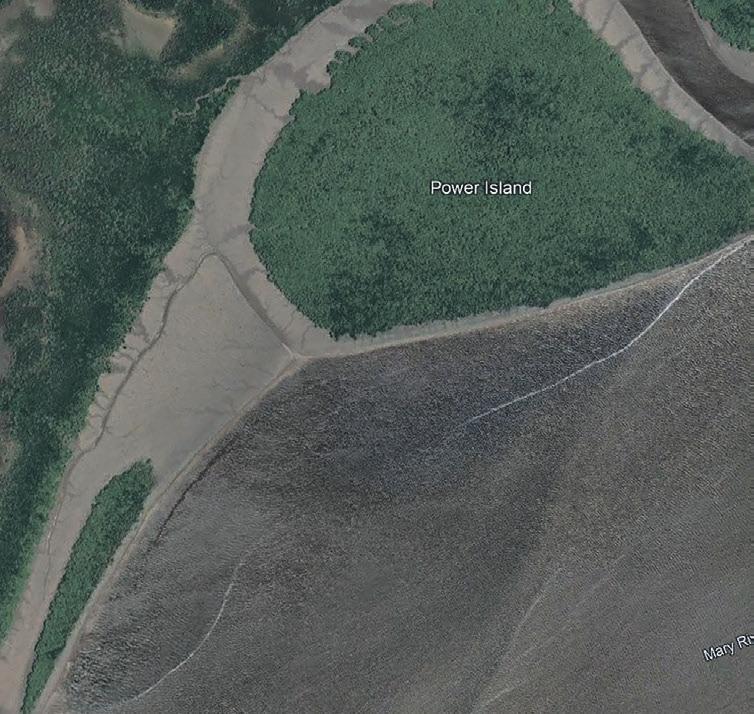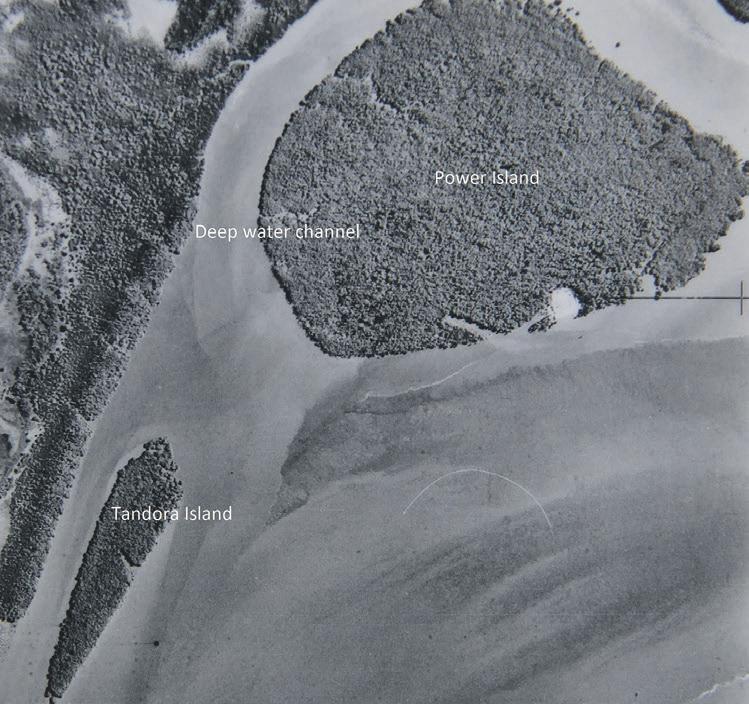
3 minute read
Changing river conditions illustrated
Lindsay Titmarsh
IN THE last edition of the ‘Sun’, I told how beacons guided ships in local waterways.
A lighthouse at Double Island Point, and two on Woody Island guided vessels as well.
The remnants of old wooden beacons, unused since 1977 when battery powered lights took over, have a story to tell.
By comparing known river conditions back then to today’s reality is interesting.
Situated just upstream of ‘China Bight’, which itself is located close to River Heads, is a large wooden pylon.
It originally supported an A-frame wooden beacon which had a fixed kerosene navigation light.
When Bob Burns, whose job it was prior to 1977, to service that light weekly, it was situated about 15 metres away from the Mary River shoreline – now it is well over 40 metres away. Almost opposite this location, on unofficially named Tandora Island, a remnant of an old wooden beacon tells a similar story.
As a 1958 aerial photo shows, it was then positioned at the end of a cleared corridor, at least 30 metres inland.
Now it is almost on the foreshore.
Most of the mud from these eroding riverbanks, ends up outside of the river system.
It smothers seagrass and coral reefs.
An accompanying photo shows white circular patches on the foreshore of Power Island.

That is where dredged material was pumped ashore when the river was dredged after the 1955 flood.
The photo also shows corridors cut for beacons, as well as the deep-water channel between Power Island and the riverbank.
The second photo shows how the foreshore of Power Island has been washed away, as has the now much slimmer Tandora Island.
The deep channel behind Power Island is now almost silted right up.
It is interesting to note that at the time of European settlement in this district, Tandora Island did not exist.
It was created in the
1880’s, when sand and mud dredged out of river channels was dumped there.
When Bob Burns’ father, Joe, started professional fishing over a hundred years ago, that site was just starting to grow mangroves. This meant that the area had reached a height of mean sea level.
Maybe in a hundred years or so, it will again cease to exist. Something to think about.
Kangaroos face habitat loss to development
WE HAVE invited Nuala McClemon from the University of the Sunshine Coast to talk about macropods and specifically the Eastern Grey.
Kangaroos are an iconic species. Eastern Grey kangaroos are often considered as abundant and of least concern.
On a national scale that maybe the case, but unfortunately declines are documented on a local scale.
For example, Dr Beth Brunton of the University of the Sunshine Coast has studied the decline of Eastern Grey kangaroos in Southeast Queensland, finding that population declines are more likely in areas of urban development, that result in habitat loss and increased vehicle collisions.
Nuala has become the researcher of this special project after the Fraser Coast Branch, concerned about the displacement of the Eastern Grey in the Hervey Bay area, contacted Dr Beth.
As the region’s population is predicted to increase by 21% over the next decade or so, pressures are likely to increase as time goes by.
Honours student Nuala is from the UK originally but has been a resident of Australia, is a lifelong animal lover, who has previously worked as a dog trainer and walker, as well a wildlife carer and a ranger in a wildlife park.
Nuala graduated from her Animal Ecology degree at the University of the Sunshine Coast in 2022 and embarked on her Honours project this year.
The aim of the project is to use the data collected by the Fraser Coast Branch during their “Kangaroos in Focus” survey day alongside spatial data to assess potential movement patterns of kangaroos with the intention of creating a map and suggestions to provide to Council with the aim of lessening the impact of development on resident kangaroos.

Nuala’s talk will be about this most resilient macropod including recent research, and the reason for focusing on a species that is not currently considered threatened.
Go along and find out more by booking on Eventbrite. There will be two talks on July 21; in the Maryborough Library from 10am to 11am and the Hervey Bay Discovery Centre from 1pm to 2pm.










